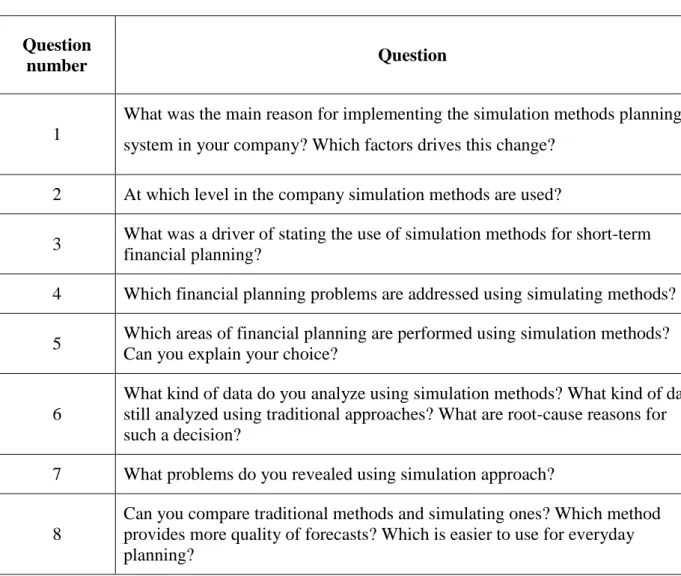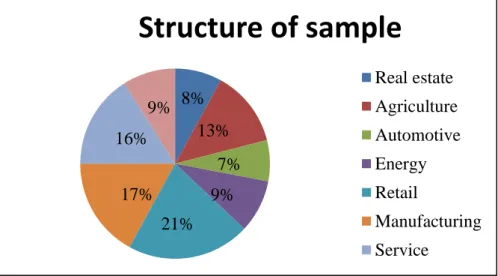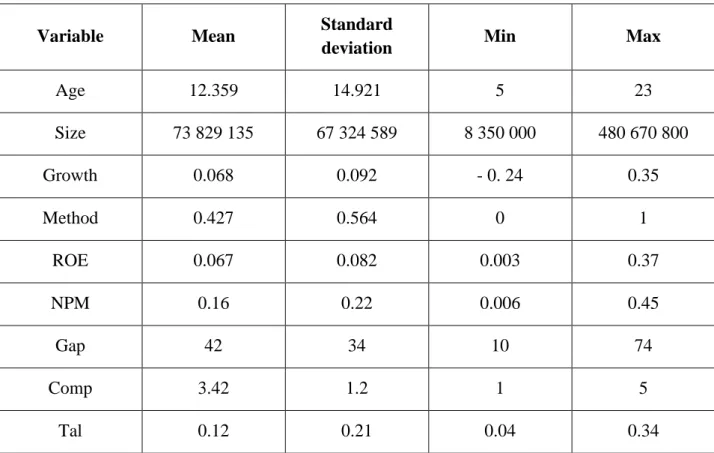Title of the master's thesis The use of simulation methods in the short-term financial planning of the company: the case of SMEs. This illustrates that modern methods of financial planning are not well known in Russian scientific society.
FUNDAMENTALS OF FINANCIAL PLANNING IN SMES
The definition of “financial planning”
On the basis of material and purpose-oriented approaches to financial planning, the author gives such an interpretation of the concept of "financial planning": "Financial planning. In another study (Murphy, 2011), the author stated that financial planning is an instrument for controlling performance.
Academic studies on financial planning and performance of SMEs
In 2016, Okafor (2016) conducted a study on the effect of financial planning practices on the profitability and growth of SMEs. The topic of financial planning and performance has been well studied and evolving over the past decades.
Core elements of financial planning of SMEs
The quality of financial planning is positively related to the quality of investment appraisals within the company's operations. There is a common opinion that the purpose of financial planning is to maximize the company's profit.
Principles and forms of financial planning
Financial planning as a continuous process can be divided into several separate steps, and within each of them the company carries out planning. During the period of financial planning, company managers analyze financial indicators, check the quality of planning and control efficiency, and if necessary adjust plans and correct financial parameters.
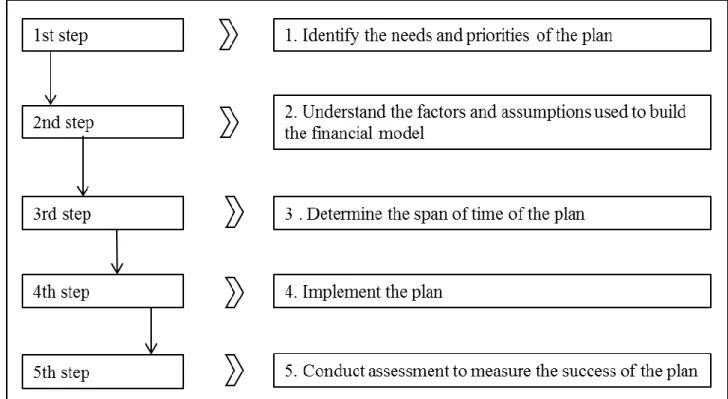
Characteristics of short-term financial planning
Future financial planning (includes forecast plans drawn up for three years or more, and determines the main indicators, goals and objectives of the company, information on investment and financing activities of the company). The purpose of short-term financial planning in a general sense is to solve difficulties and achieve the goals set in the strategic plan.
Methods of short-term financial planning
This leads to wrong management decisions and to a reduction in the company's competitiveness (Yuzvovich, 2014). The planning is carried out based on the values of standards, but also on the value of the basic indicator. The principle of the balance sheet method of financial planning is that a company focuses on the need to balance available financial resources with the planned need for them to carry out its activities (Krylov, 2014).
The expected quality of the model is determined by statistical methods, and it is also confirmed by practice. This method is based on simulating a large number of process realizations constructed by the researcher and studying the relative proportion of successful results. On the other hand, the simulation results cannot so clearly reflect the legality of the phenomenon.
This method is universal, regardless of the complexity of the simulated systems and the level of detail.

Research gap and formulation of hypotheses
45 Based on the literature review above, financial planning approaches can be grouped into two groups: traditional methods (fundamental) and modern methods (simulation). The second represents the latest approach to forecasting future cash flows, or financial planning - simulation modeling. These parameters reflect today's approach to evaluating the effectiveness of financial planning and capital budgeting.
Several studies (Batra, 2017; Lyngstadaas, 2016; Georgescu, 2010; Bennouna, 2010) have shown the importance of balancing the level of cash to avoid significant cash gaps. It is important to look at the financial performance of companies that use different methods of financial planning. Nevertheless, based on the literature review, it was suggested that companies using modern approaches of short-term financial planning have more opportunities for successful financial performance.
Companies that use simulation methods for short-term financial planning have better financial results than companies that use fundamental methods.
Summary of Chapter 1
RESEARCH METHODOLOGY AND DESIGN
- Research methodology
- Data collection procedures
- Time horizons
- Evaluation criteria and validity
- Limitations of study
- Summary of Chapter 2
Multiple sources of information lead to a deeper understanding of the research questions and the ultimate goal of the study. Finally, several participants of the Ural Economic Summit were personally surveyed by the author of this research. The time horizon of this research reflects the main purpose of the study - to find out differences in the performance of companies over the years.
Furthermore, our sample consists of carefully selected data given the limitations of the study and the research question. We can probably err on the side of generalization due to the limitations of the research and the specificity of the study methods. The reliability of this study cannot prove that the repetition of the study will be identical, but the author tried to avoid the bias of the researcher and the possible influence of the collected data in order to ensure the high quality of the research.
In Chapter 2, we revealed the research methodology used in this study.
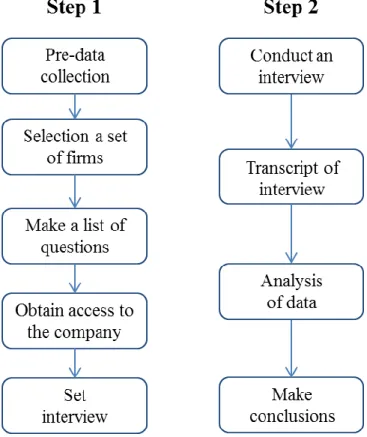
EMPIRICAL STUDY
Research design and operationalization of variables
The following regression model was used to test two hypotheses from Chapter 1. The choice of this model is based on the existing studies on similar topics, where the linear regression model was used to assess the influence of the financial planning method on financial planning. the financial results of a company (Albrecht & Steinrücke, 2017; . Messer, 2017; Bielialov, 2016; Rasoto, Ishikawa & Stankowitz, 2016). The models of the regression were built according to the design shown in equations 1-4 regarding three steps of the basic model and the final extended model below, while the description of the variables used in equations can be found in Table 5 found it.
Since this type of regression is quite sensitive to unconditional data, few assumptions need to be met before the test can be met. Method Method of financial planning used in a company Binary Size Size of a company is the amount of the annual income Tel. Tal Logarithm of share of talents in company's staff Continuous Efin Ease of financing is an estimate from 1 to 5 Tel.
A firm's sector was also included in the model as country dummy variables for each industry presented in the sample (Table 6).
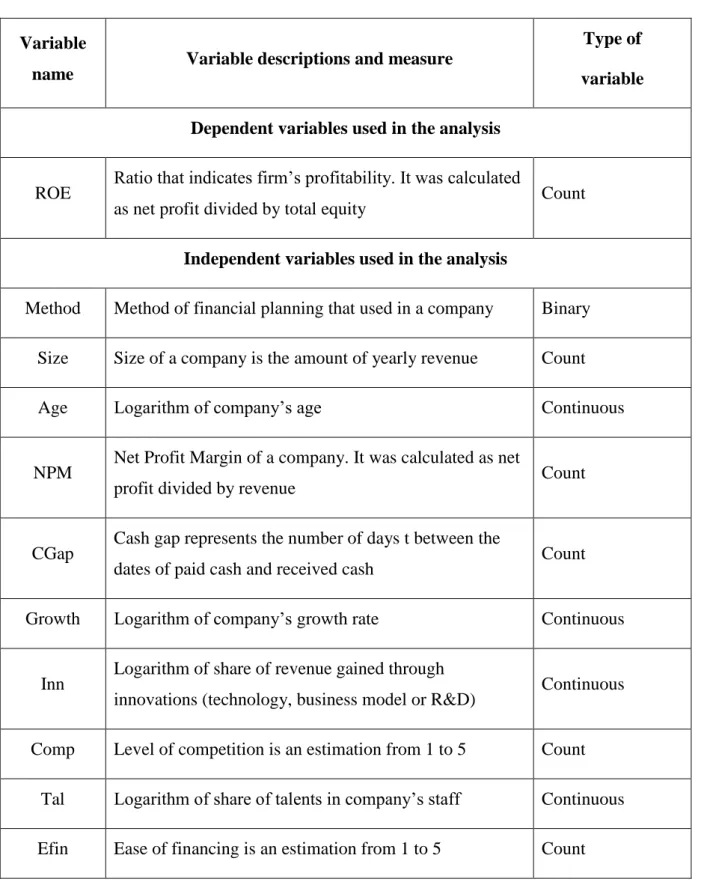
Model specification
65 Азбаски моделҳо хаттӣ мебошанд, онҳо барои гетероскедастикӣ ва таносуби силсилавӣ танзим карда мешаванд. Санҷиши тағирёфтаи Уолд барои гетероскедастикаи гурӯҳӣ дар модели регрессионии ҷуфтшуда татбиқ карда шуд ва гетероскедастика муайян карда нашуд.
Descriptive statistics
Some correlations emerged naturally due to the nature of the data (68% correlation between the size of a company and age). The average correlation between the growth rate and the age of a company reflects the specifics of the sample and the current business environment, because most experienced firms always have more opportunities to grow in a crisis. The strong positive relationship between the financial planning method and the growth rate indicates, from our point of view, that the growth rate can be partly explained by the quality of financial planning and the financial planning method.
These two industries are followed with agricultural industry making up a significant part of the sample, 13%. Average age of a company within the observed sample is 12.3 years, which means that on average observed companies have been working for more than ten years and have the necessary business experience, which is sufficient while analyzing the relationship between financial planning and financial performance of companies. The average value is 0.427, which means that on average less than 43% of Russian small and medium-sized companies use modern approaches of financial planning.
Moreover, some companies operate in a not so competitive environment, leading to a low level of uncertainty and lower risks. Thus, the use of modern financial planning methods is not necessary for successful results.

Hypotheses testing and analysis
- Base mode testing
- Hypothesis 1
- Hypothesis 2
If the coefficient of the main variable is below 0, we must reject our null hypothesis and conclude that companies using fundamental short-term financial planning methods have better financial results than companies using simulation methods. R2 between reflects the quality of the regression fit and is large enough (0.7220), so the change in time averages for each method has a more significant effect on an individual variable than the time changes of these indicators relative to the average. A regression model with fixed effects is the same as the original regression model, rewritten in terms of deviations from the time-averaged values of the variables.
R2 med reflects the quality of regression adjustment and is large enough (0.782), so the change in time averages for an individual method has a more significant effect on an individual variable than the time changes of these indicators relative to the average. If the coefficient of the main variable is above 0, we can accept our null hypothesis and conclude that companies using simulation methods of short-term financial planning have better financial results than companies using fundamental methods. If the coefficient of the main variable is above 0, we can accept our null hypothesis and conclude that companies using simulation methods of short-term financial planning have better financial results than companies using fundamental methods.
The seven parameters tend to explain 56.7% of the variance (R2 overall), which is also seems realistic and showed that the regression model is important to explain the sample.
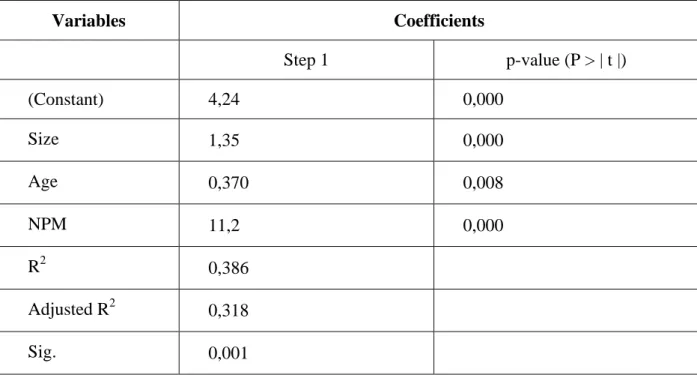
Conclusions
The answer is that modern methods of short-term financial planning generally have a positive relationship with company performance and, on average, provide better conditions for financial performance. The results of the empirical study lead us to the conclusion that, on average, companies that use simulation methods for short-term financial planning have better financial results than companies that use fundamental methods. SMEs that use updated approaches to financial planning show better financial performance on average and have wider growth opportunities and sustainable development.
Ten key parameters were used for a regression model explaining the profitability or success of SMEs: age of the company, its size, growth rate, method of financial planning, net profit margin, level of liquidity gap, level of competition, share of talent, share of innovations and ease of financing. Based on our sample, three of them turned out to be statistically insignificant: share of talents, share of innovations and ease of financing, so we can conclude that these factors are not relevant to describe the variability of the sample of Russian SMEs' is. Dozens of factors affect a business, and in our view, well-established financial planning is a powerful management tool that helps stabilize operations and survive.
87 explicitly show them the intrinsic value of modern financial planning methods and present the idea of change.
Theoretical contribution and managerial implications
Recommendation for future research and limitations
AFP (Association for Financial Professionals) Financial Planning & Analysis Benchmarking Surveyб 2016: www.AFPonline.org/FPASurvey. Financial planning and forecasting model for light industry enterprises under the external environment uncertainty / Bielialov T. Financial planning in engineering organizations. by Cheng-Few Lee, Alice C. Financial analysis and planning: an overview / Cheng-Few Lee, Joan C. Junkus // Journal of Economics and Business.
Transfer prices and their effect on financial reporting / John McKinley, John Owsley // Journal of Accountancy, 2013. The Perception of Small & Micro enterprises in the City of Durban Central Business District against financial planning, Mediterranean Journal of Social Sciences, 5 (6 ), p Conflict between financial decision-making and management culture / Suzianna Wagland, Talia Sommers // Journal of the Financial Planning Association of Australia, 2015.
An integrated approach to the study of the essence, principles and methods of financial planning in enterprises of the economic system / L.I.
Survey
